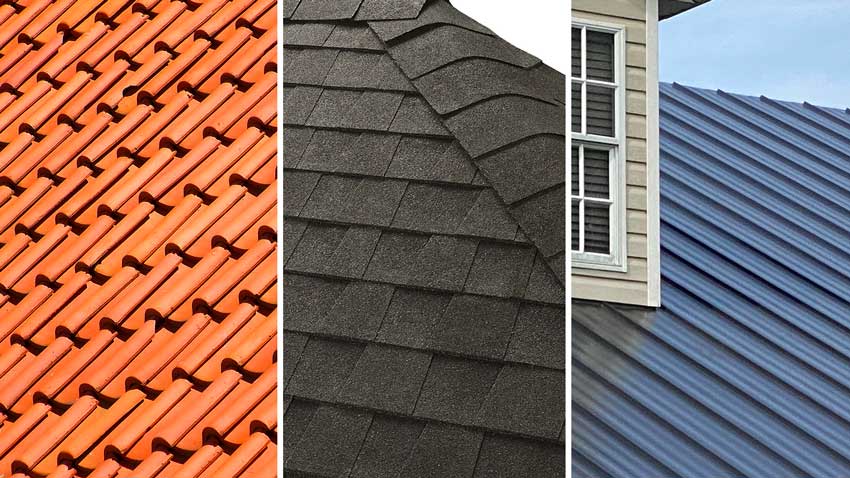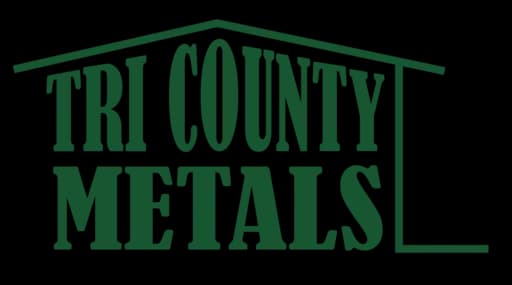What Is the Best Roofing Material? Pros, Cons & Costs Explained

No one looks forward to the dreaded time in the life of a home: roof repair or replacement. But as a homeowner, it’s a necessary investment from time to time. And unless you’re researching ahead of time, you may not be familiar with all the roofing material options available.
The material you choose can significantly impact the longevity, aesthetics, and energy efficiency of your home. In this guide, we’ll help you compare the best roofing materials for your needs.
Take the first step
Schedule a fast, no-pressure visit. Since 1987 we’ve got you covered.
Get startedAsphalt Shingles
Asphalt shingles are the most common roofing material in the United States. They’re affordable, easy to install, and widely available in a range of colors. Reinforced versions with fiberglass improve durability without changing the appearance.
Best for: Most suburban homes
Average cost: $70–$120 per square
Lifespan: 20–25 years with maintenance
Clay and Concrete Tiles
If you’re looking to add texture and flair to your home, clay and concrete tiles are excellent options. Though heavy and more expensive, they’re non-combustible and long-lasting. Concrete tiles offer a slightly more economical alternative while providing energy efficiency.
Best for: Mission, Southwestern, and Mediterranean-style homes
Average cost: $300–$500 per square
Lifespan: 40–50 years
Metal Roofing
For durability and resistance to extreme weather, metal is one of the best roofing materials. It comes in panels or shingles, using materials like stainless steel, zinc, aluminum, or copper. Metal roofs are also excellent for homes in areas with frequent storms.
Best for: Contemporary and cottage homes
Average cost: $100–$800 per square
Lifespan: 40–75 years
Slate
Slate offers unmatched elegance and longevity. Available in rich colors like black, green, and purple, it’s fire-resistant and even recyclable. However, slate is heavy and expensive, requiring reinforced framing and professional installation.
Best for: European, Colonial, French chateau homes
Average cost: $600+ per square
Lifespan: 50–100 years
Wood Shingles and Shake
Wood roofing brings a timeless, rustic charm. Shingles are machine-cut for uniformity, while shakes are hand-split for a more rugged appearance. While beautiful, they require fire treatment and may not perform well in wet climates like Florida’s Gulf Coast.
Best for: Cape Cod, Craftsman, and Tudor homes
Average cost: $100–$150 per square
Lifespan: 25–30 years
Synthetic Roofing
Synthetic roofing materials made from rubber, plastic, or polymer mimic the appearance of wood and slate. They’re lightweight, often fire-resistant, and built to last. However, long-term durability is still being evaluated since these are newer to the market.
Best for: Versatile use across home styles
Average cost: $300+ per square
Lifespan: Up to 50 years
Tesla Solar Tiles
If sustainability and energy savings are priorities, consider Tesla’s solar tiles. These glass tiles blend in with standard roof materials while generating electricity for your home. They’re paired with the Tesla Powerwall, allowing your roof to serve as a clean energy generator.
Best for: Eco-conscious homeowners planning long-term stays
Cost: Premium pricing (varies by home)
Lifespan: 30-year performance guarantee
So What Is The Best Roofing Material?
The best roofing material depends on your priorities: budget, climate, style, and longevity. Asphalt is economical, slate is timeless, metal is durable, and Tesla tiles are futuristic. Each has its pros and cons.
Still not sure which roofing material is right for your Sarasota home? Contact us today and we’ll help you make a smart, long-lasting choice for your roof.















